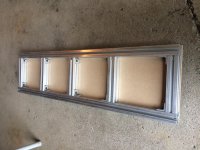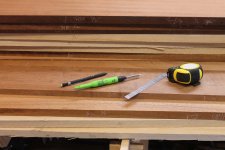ChuckM said:Michael Kellough said:It’s not easy to build something truly flat.
Snip.
Many woodworkers spend lots of money on accessories, trying to get things "truly flat", "truly square", "truly straight" or "truly out of wind", with some only to find it either truly unachievable or truly not mattering as once the build is subject to use or environmental changes (humidity, for example), "truly whatever" is not really that critical in a lot of cases.
It's definitely true that in many cases you don't need things dead flat or dead straight or square. I like to start out with my lumber straight, square, and flat though. The reason many woodworkers spend hours setting their jointer beds coplaner and the outfeed table at the level of the knives is for that very reason, they want their lumber to be dead flat, straight, and square to start a project. I could probably get by with the sled the way it is but there are definitely some great ideas here that could help me improve it.








